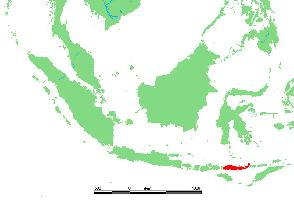
State of endangerment
| Extinct |
Animal description
Homo floresiensis, commonly referred to as the "Flores Man" or the "Hobbit" due to its diminutive stature, represents an extinct species of early humans that has captivated the imagination of the scientific community and the public alike. Discovered in 2003 in the Liang Bua cave on the remote Indonesian island of Flores, this species has challenged traditional views on human evolution and migration patterns.The physical characteristics of Homo floresiensis are remarkable for their mixture of ancient and modern traits, a blend that has stirred much debate among paleoanthropologists. Standing at an average height of about 3.5 feet (approximately 1 meter) and weighing roughly 25 kilograms (about 55 pounds), these individuals were significantly smaller than modern Homo sapiens. This small stature has been attributed to an evolutionary process known as insular dwarfism, a phenomenon where species become smaller over generations when their population’s range is limited to a small environment, like an island, with limited resources.
The skull of Homo floresiensis is particularly fascinating, with a brain size akin to that of chimpanzees, approximately 400 cubic centimeters, yet it exhibits advanced features in tool usage that suggest a higher cognitive function than what might be inferred from brain size alone. This combination has led some researchers to propose that brain efficiency, rather than size, played a crucial role in the development of Homo floresiensis' tool-making and hunting capabilities.
Archaeological evidence from the Liang Bua cave site has revealed stone tools and remains of hunted animals, indicating that despite their small size, Homo floresiensis were proficient hunters and tool users. These findings include sophisticated stone tools that were likely used for cutting, butchering animals, and woodworking. Such evidence challenges the notion that a larger brain is necessary for the development of complex tools and hunting strategies.
The discovery of Homo floresiensis has also sparked discussions about its place in the human evolutionary tree. Some scientists propose that it descended from Homo erectus, a species known to have lived in Southeast Asia over a million years ago, suggesting a remarkable example of prolonged evolutionary stasis and adaptation. Others suggest that it may represent a lineage that branched off even earlier in the human family tree, potentially reshaping our understanding of hominin diversity and migration.
The exact reasons for the extinction of Homo floresiensis remain a subject of research and speculation. It is believed that they lived on Flores until as recently as 50,000 years ago, possibly overlapping with modern humans (Homo sapiens) for a period. Factors such as volcanic activity, climate change, competition with modern humans, or a combination of these may have contributed to their demise.
In conclusion, Homo floresiensis embodies a fascinating chapter in the story of human evolution. Its discovery has not only expanded our knowledge of the complexity and variability within the Homo genus but also underscored the remarkable adaptability of early human species to diverse and challenging environments. As research continues, Homo floresiensis will undoubtedly continue to provide invaluable insights into the evolutionary history and capabilities of early humans.
Map of occurrence

Similar Animals
New photos of animals
Top 10 animals
- Dolphin gull (Leucophaeus scoresbii)
- Diana monkey (Cercopithecus diana)
- Moustached guenon (Cercopithecus cephus)
- Stone loach (Barbatula barbatula)
- Greek tortoise (Testudo graeca)
- Galápagos tortoise (Geochelone nigra complex)
- Japanese macaque (Macaca fuscata)
- Russian tortoise (Testudo horsfieldii)
- Common flying dragon (Draco volans)
- Galápagos penguin (Spheniscus mendiculus)


